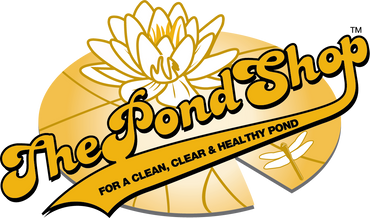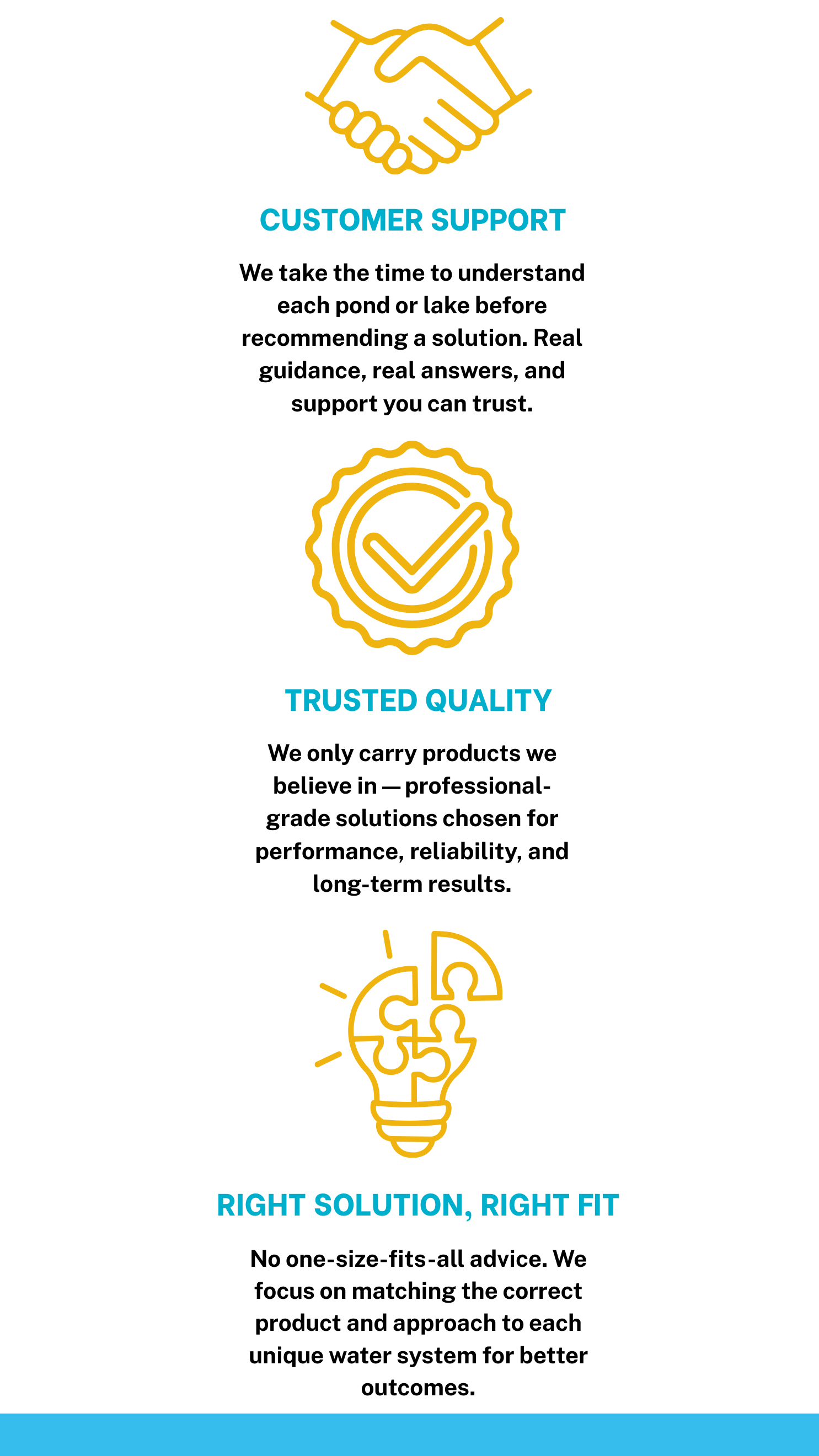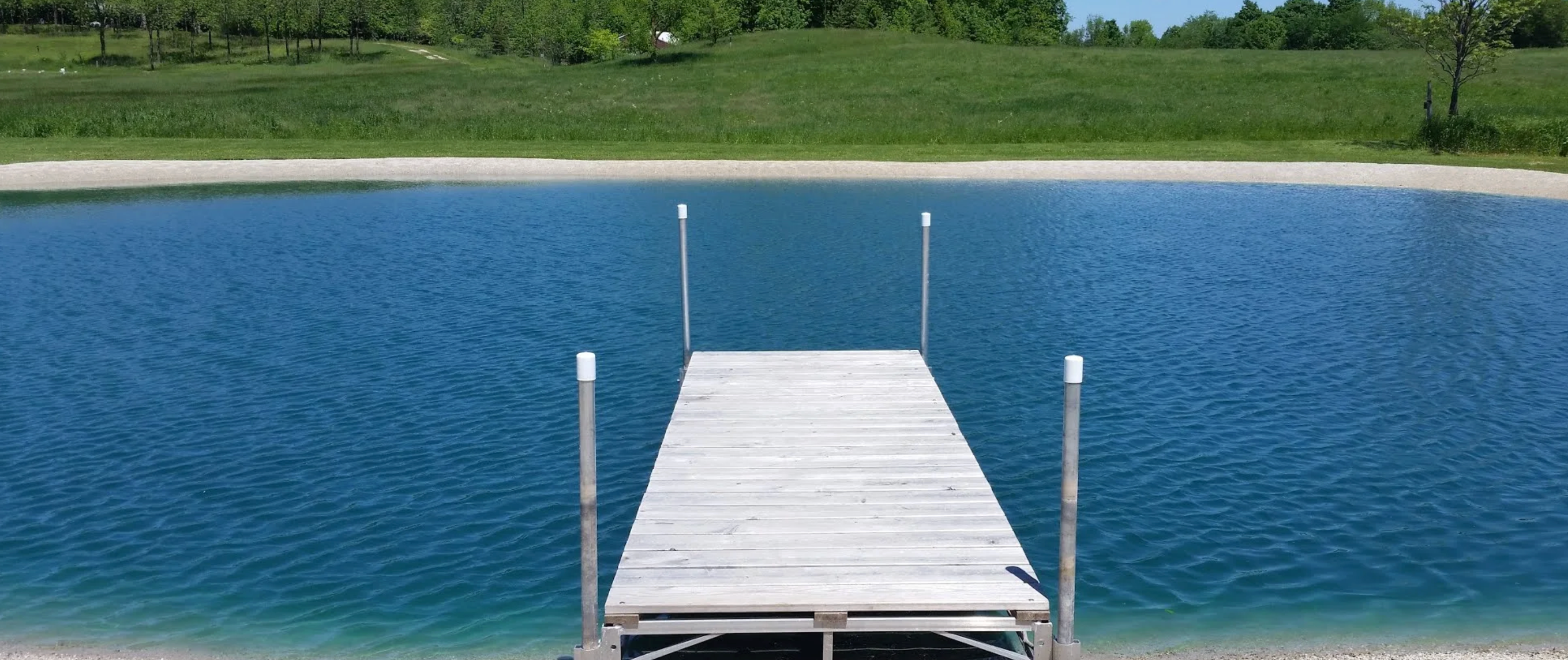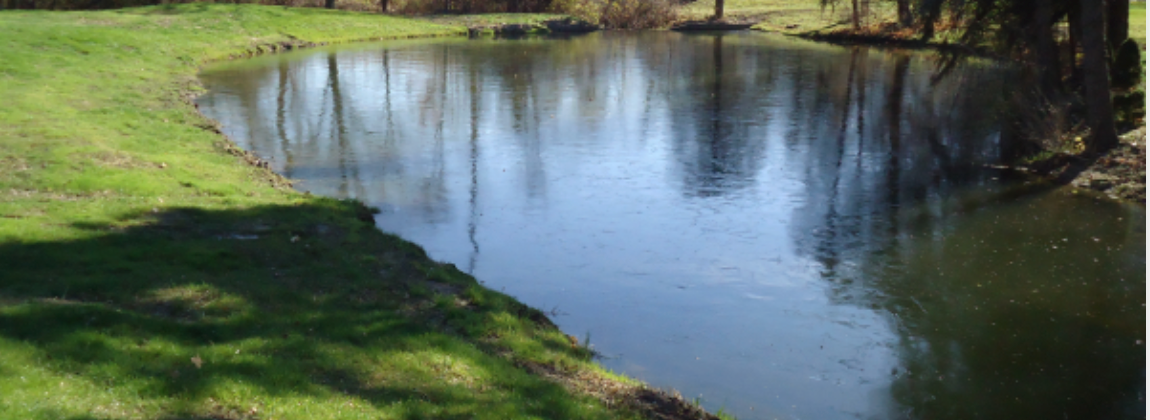Lyngbya

Lyngbya is a large-celled, filamentous, mat-forming algae. Lingbya can grow to be several inches thick, covering large areas of the waters surface or bottom sediment. These mats are usually tan, greenish and sometimes black in color and can be mistakenly identified as dead floating algae. Mats often float to the surface as trapped gas is expelled from the substrate or decaying algae cells. Lingbya mats may cover entire cove areas of lakes or the surface of small ponds. Mats can impede navigation and recreation, cover and smother submersed plants and clog water intakes.
Prevention
There are few things as difficult to treat and prevent as Lyngbya. Lyngbya cells can be transferred from one water body to another by boat hulls and bilge water and by animals. Also, cells can be spread by storms and hurricanes that can transport water droplets or particulate matter over large distances. If the Lyngbya spores find the right water conditions such as high nutrient loads, high levels of nitrate, phosphorous and iron and it will thrive. Thorough and continual raking of the substrate around a water body's perimeter or lake frontage or continuous water circulation will help prevent the onset of Lyngbya.
Physical/Mechanical Control
Lyngbya can be removed from a water body with a rake or net, but this control will be short-lived, as the mats will repopulate quickly. Mechanical removal, when used in conjunction with biological and chemical control methods, will maximize success.
Biological Control
Bacterial Products and enzymes feed on nutrients in the water making them unavailable for algae growth.
Chemical Control
Early intervention can improve the chances of successfully managing an algae bloom. If dense mats have formed on the surface of the pond, special treatment with high-powered equipment may be necessary to break up the mats and allow the chemicals to properly penetrate into the algae cells. Copper compounds such as Cutrine Plus Liquid and diluted Copper Sulfate Crystals have been used with some success both individually and in combination. The addition of certain Spray Adjuvants like Cygnet Plus that help to hold the herbicide in contact with the plant cell can improve treatment results.
Alternative Control Methods
Pond Dye and colorants can assist in the prevention of aquatic plant growth by limiting sunlight penetration and reducing photosynthesis.





